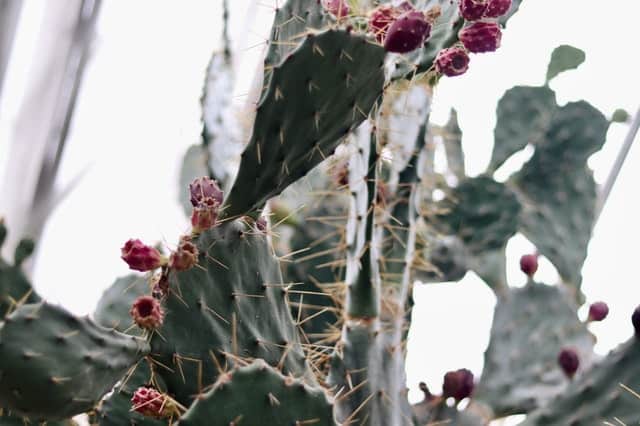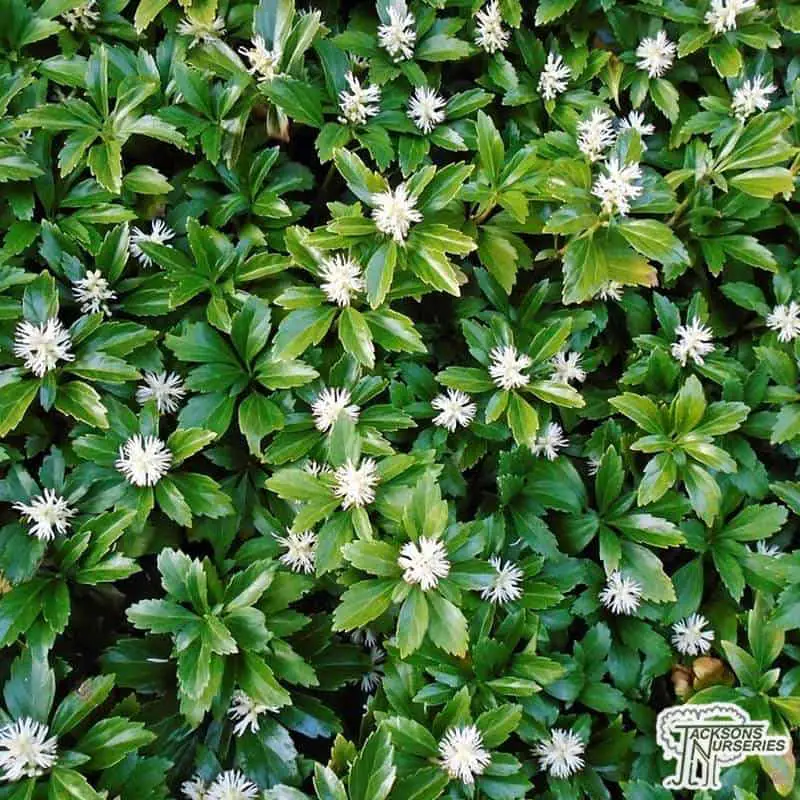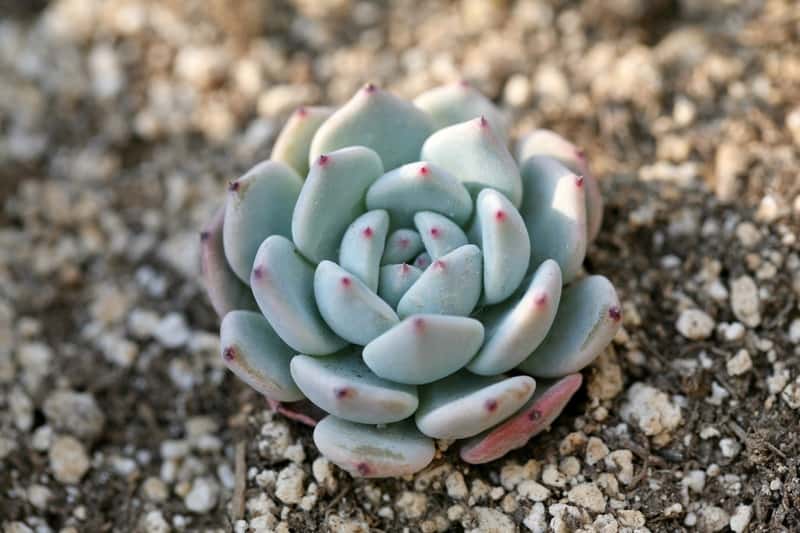Succulents have long been the most popular types of indoor plants. There are different reasons for their fame. You can quickly grow them in your homes if you properly look after these plants. The four primary elements to think when caring for succulents are water, light, temperature, and soil. Succulents come in various shapes and sizes and need very little care in the way of watering or pruning.
These plants are adapted to arid climates, and therefore need minimal water (if you are in a very hot climate and your succulents have fantastic drainage, you may have to water 2-3 times per week). Most succulents require at least 3 hours of direct sun every day, either outdoors or in a window. Putting them in a position to receive sunlight in the morning is ideal, as the afternoon sun is harsher and more likely to destroy plants. As far as soil is concerned, you can use cactus mix soil for planting succulents.

There are plenty of other things that you need to know about growing succulents indoors. In this article, we will discuss these points one by one!
Why Succulents for Indoor plantation?
Succulent plants are great indoors as they are adapted to survive dry conditions. In winter, mainly, homes deliver dry interior air to houseplants; that is why most of them don’t survive. The low relative humidity is not a houseplant’s friend. Succulents with their water-storing capacity, tolerate dry air without any noticeable drawbacks.
Breathing Space for Succulents
Succulents don’t require much of a root zone as they hold moisture in their leaves or stems. You can also leave a little more space between your succulents and grow a little quicker. It is an excellent option if you would like your plants to become more prominent or reproduce on their own more readily.
When there is space between these plants, it is much easier to water them. There is also a perfect airflow; therefore, the soil will dry out more instantly. Quick-drying soil makes succulents very happy.
Remember that you don’t need them too far apart or in a larger pot than they are. Too much space will lead these succulents to consider forming roots instead of getting more substantial. We recommend you that ½’’ to 1’’ is a great space between plants.
Care Guide to Grow Succulents Indoors
You can buy succulents online or at a nursery and usually store them in shady areas. They should adapt to their new outdoor conditions when you bring them home. If the succulent plants are not used to the sun’s strength or amount in your outdoor place, they may become sunburn and even die.
The skin on a succulent is delicate, so after bringing home, you need to mimic the growing conditions where you obtained the plant from. You have to slowly acclimate it to where you want it to grow or develop. Therefore, position these plants in a shady area or somewhere they may take indirect sun exposure when you bring succulent plants home.
Below are the points you need to know to grow succulents in your home;
1. Lighting
Succulent plants love heat or light. Outdoors succulents get full sun to light shade. Certain succulents will change colors in the sun or with the seasons. But indoors, you have to place your succulents near a window that receives light all day. You can put your succulents near the brightest window or brightest area of your home or office.
As the excellent household plants, succulents are already adjusted to a warm, dry environment, but they do require bright light. Indoors succulent plants can obtain sunrays near a window or bright light. As a typical rule, if there is adequate sunlight for you to read, there is probably adequate sun to make your plant happy.
Outdoors Haworthia like bright light, but receive less sunlight than most succulents. One or two hours of the direct sun usually are their limit. They will turn orange if they are receiving too much sun. Moving them to more shade will alter them back to green.
A very light frost is not a problem for succulent plants. A hard freeze will freeze them solid. In freezing winter places, bring your plants inside and place them in an area with lots of light.
2. Temperature
Succulents can tolerate a wide range of temperatures if they receive a proper amount of sunlight and water. Typically, it’s not a preferable option to keep the more delicate succulents in temperatures more than 95 degrees or below freezing.
Sweltering weather may cause succulents drooping if their soil becomes too dry in high heat. And in temperatures below freezing, the water stored in the plant can freeze, leading to the permanent destruction to the plant tissue.
3. Water
The easiest way to destroy a succulent is with too much water or a high amount of TLC. Unlike general houseplants, succulent plants store water in their leaves or roots that function as a reservoir to fulfill the plant’s thirst. Don’t go for overwatering and water only adequate to keep leaves from withering.
A plant requires watering to involve shrinking or puckering leaves and typically shiny leaves, which appear dull. If you feel it’s time to water, shove a finger into soil two knuckles deep to ensure it is dry.
When you water, use enough; therefore, it runs out drainage holes. Empty the drainage saucer, so plants don’t remain in water overnight. Approximately 90% of houseplants require soil to dry out entirely before watering.
4. Soil
The soil is perfect for succulent plants that don’t hold water. You can offer that to ’em in 3 ways. First, if you already contain gardening soil at home, include pumice or perlite to your mixture, both of which you may purchase online or at your local nursery.
You can also buy succulent-friendly Gritty Mix soil that mimics the natural soil they like to grow in. Moreover, you can even try preparing your succulent soil at home by mixing pine bark fines, crushed granite, or surface. These options make sure your succulent plants are growing or developing in materials that pull the water away.
5. Pot
Generally, plants stay restricted to the root space provided to them. Even an Echeveria that would typically grow quite large will comfortably hold at a smaller size when you plant it into a smaller pot. You should remember that for that exotic impact in borders, you require big plants, and for this, you require big pots!
6. Fertilizer
These tough plants experience the most substantial growth or development during spring and summer. Growth reduces in fall, and winter is their quiet time. Fertilize lightly or avoid altogether at all during winter. In summer, feed plants 3-4 times with suitable fertilizers.
Utilize an average houseplant fertilizer for most, but remember that it is accessible to over-fertilize succulent plants. In most cases, they must be fed lightly or approximately half what you would feed a daily houseplant.
7. Ideal Climate
These tough plants thrive in temperate climates. If you live in a place where the temperature minimizes below freezing or surpasses 100 degrees, you must pot your succulents in moveable containers and be ready to relocate them during intense weather conditions.
8. Pest Control
- Use of Insecticidal Soap
Insecticidal soap can be very efficient in removing aphids, mealybugs, mites, and a host of other succulent pests. You can learn to prepare homemade organic insecticidal soap spray from online. One can use a teaspoon of dish soap/dishwashing liquid in a quart of water as a spray. It can be beneficial.
Pay attention while utilizing this spray as just like rubbing alcohol, soap may destroy the plant’s epidermis and affect the plant’s natural oil or wax coating.
You should test the product you are going to use as a spray on your plant’s very small-hidden area before spraying it all over the plant.
- Use Natural Organic Insecticide Treatments
Insecticides such as pyrethroids or natural, organic insecticide sprays like neem oil or horticultural oil may also be useful. You must read and follow the instructions on the label of any pest control product you select to ensure it is safe for use on your indoor succulents.
Steps to Grow Succulents Indoors
Due to succulents’ ability to store water, they tend to thrive in hot, dry climates and don’t feel a little neglect. It makes them well adjusted to indoor growing and perfect for individuals wanting low-maintenance houseplants. If you are selecting succulent plants for the first time, follow these steps for growing succulents indoors.
1. Select a Perfect Succulent for Your Indoor Conditions
Most succulent plants like direct sunlight. But if your house is full of shaded corners, you can choose low light-tolerant plants such as mother-in-law’s tongue. If you are going to grow your succulent in a hanging planter, then a trailing variety such as a string of bananas is a perfect option. You should read the plant labels to get to know the sunlight requirements, spread, and size of your succulents.
2. Offer a Well-Draining Potting Medium
Always plant the succulents in soil that is high and stores too much moisture, therefore you will want to repot your plant as soon as you bring it home. You can begin with a coarse potting mixture with perfect drainage or aeration.
You may find particular cactus or succulent mixes or even utilize an African violet mix. For more drainage and to stop compaction, include perlite or pumice to the African violet mix or cactus (up to 49% of the entire potting mix, relying on your specific succulent moisture requirement). Always wet the mix before utilizing it to make sure it is adequately moist.
3. Select Your Container
In this step, you need to choose your container to grow succulents. When repotting, utilize a container that contains a drainage hole and is at least 1 to 2 inches huge than your typical nursery container.
Don’t use glass containers like terrariums as a long-lasting potting solution, because they don’t permit roots to breathe and can lead root to rot over time. You can fill the bottom one-third of the pot with a pre-moistened potting mix. Then position your plant inside or backfill with enough pre-moistened potting mix.
4. Keep the Potted Succulent In a Sunny Location
Like I mentioned above, most succulent plants prefer at least 5 hours of sun on a daily basis. Therefore, try to keep them near a south- or east-facing window. You can experience your succulents becoming stretching toward the light if they don’t receive adequate sunlight.
5. Permit the Potting Mix to Dry Out
The most prominent mistake plenty of individuals make with succulent plants is overwatering them. It is perfect to water more, but less frequently.
You should saturate the potting mix perfectly (while making sure that water flows out of the drainage hole appropriately) but permit this mix to dry out slightly before you again go for watering. If the potting mix frequently remains wet each day, the plant eventually loses its life.
6. Fertilize At Least Once a Year
These tough plants get most advantages from fertilizer in the spring (when the days get longer and new development starts), and again in late warmer season (summer). Utilize a balanced, water-soluble fertilizer like 8-8-8 or 10-10-10 diluted to half the strength suggested on the package instructions.
You don’t have to fertilize succulents in winter when they are semi-dormant. They don’t require the nutrient kick because they are not actively growing or developing.
How to Propagate Succulents Indoors
- You should select where to make the cut. It must be near the end of the stem or branch, typically 2 to 6 inches away, is perfect. You will also have to make sure that the plant is growing or developing.
- Clear the stem on the upper side of the intended cut. You should eliminate leaves 1-2 inches above the area you like to cut for two main reasons;
- You are going to keep that part underground.
- Also, it makes it easier to obtain a good cut.
- Depending on the plant, you may be able to propagate succulent’s leaves.
- Create a clean cut perpendicular to the stem (the stem must be flat on top or not diagonal). Make sure to utilize sharp or sterile scissors. That part is incredibly significant as dull scissors may crush your plant while cutting it that makes it less likely to recover.
- Dirty scissors pass disease-causing agents like germs directly into the wound – that is no good. I highly suggest utilizing gardening shears or scissors for this purpose.
- Permit the mother plant or the cutting to callus as you did for leaves in the above process. It must take between 4-10 days.
- Avoid letting them get wet, but keep them indirect light.
- Attach the bottom of the cutting into the dirt up to where the leaves begin to grow.
- Entirely relying on the succulent species, roots must begin growing within a month, and you can start to water. There will be adequate water in the plant already to sustain it until then.
Additional Succulent Care Tips
- Use Sand to Plant Succulent/ or Not
The fact is succulent, prefer rocky, loose soil, and require nutrients to grow or develop correctly. Sand has an ability or tendency to compact over time, leading to too much water retention in a pot. The perfect potting medium for a succulent is one mainly designed for succulents. You can use a well-draining mix of coarse sand, potting soil, and perlite/pumice.
- Begin Succulents from Seeds
Succulent seeds may be begun indoors in moist soil or light (like any other plant seeds). But grow more gradually and usually don’t reach transplant size until five months to a year after germinating.
- Succulent’s Leaves Falling off- Real Reason
Like most plants, the bottom leaves on the stem nearest to the potting mix) will dry up and drop. It is normal and does not need to take tension about it. If the upper leaves are dying, it may highlight overwatering, pests, or infection.
- Overcrowding Them
Overcrowding is one of the ideal ways to motivate mold and insect infestations. Another problem is that, although these plants do very well getting by on slim pickings, they still require food and water. Too much competition means they will be missed out.
If succulent plants arrive in a crowded arrangement, then pluck them out carefully. You should provide them each their own spacious mini desert dune.
- Get Rid of Bugs
Pests must not be an issue for indoor succulents. However, sometimes you may have to deal with bugs. Gnats love succulents that are planted in soil, which is too wet and doesn’t include adequate drainage. To avoid eggs and larvae, spray the soil with 70 % isopropyl alcohol. Mealybugs are also famous pest succulent owners have to be careful with.
Over-fertilizing and overwatering are the leading triggers of mealybugs. Transfer infected succulents away from others. And spray with 70 % isopropyl alcohol.
- Keep Succulents Clean
Your indoor succulents will gradually pick up dust on their surface that can suppress their growth. You should clean the leaves and spines gently with a damp cloth that is suitable for this job.
Summary
Due to succulent’s incredible shapes and forms, tolerance of moderate light, low humidity, and low-maintenance, they are the perfect indoor plants like florist’s Kalanchoe or mother-in-law’s tongue can increase the beauty of your living room corner or kitchen window. Its indoor growing process is very easy, and they are ready to propagate from dividing small plants, stem cuttings, and rooting leaves.
You need to know some essential points before starting to grow them like indoor succulent plants need a certain amount of neglect. In their seasonally-dry native lands, succulents established the ability to store their water supplies within stems, fleshy, or roots.
Hopefully, after knowing this information, you can grow your succulent plant to increase your home’s beauty!




